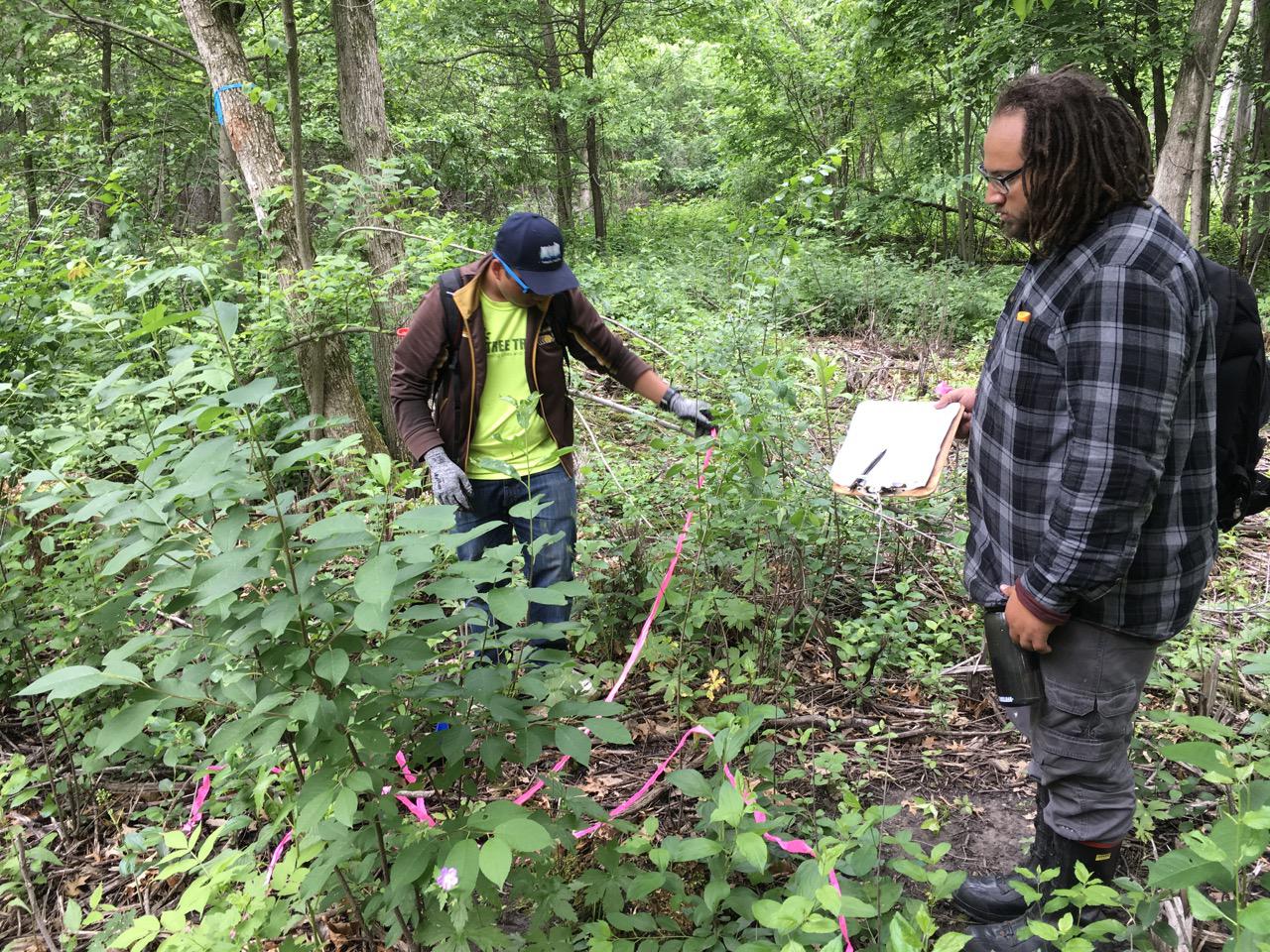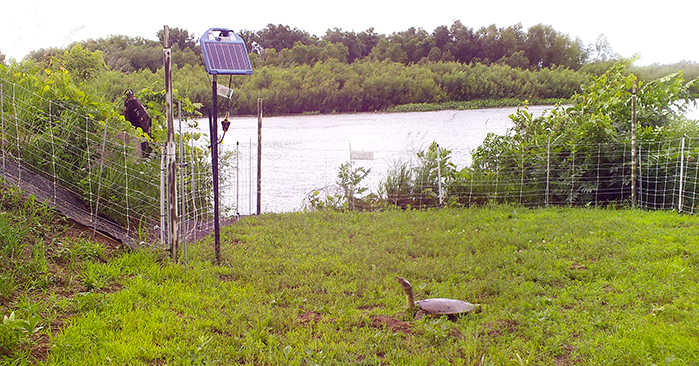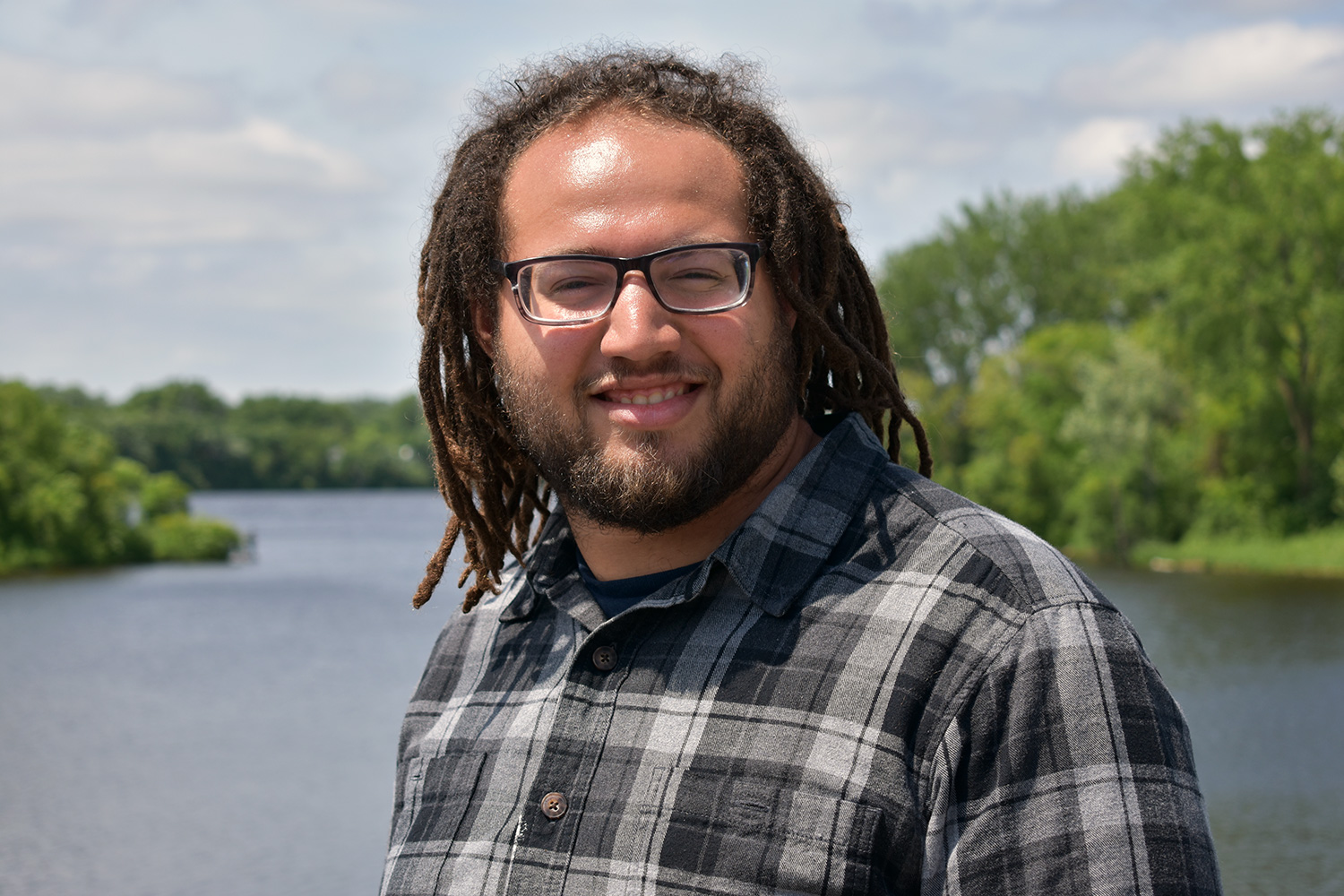Mosquitoes, monarchs and memories: An FMR ecology intern's reflections
FMR’s land conservation team works every day to protect and restore habitat along the Mississippi River. We know, however, that this is an ongoing effort that will need new conservationists long after we’ve gone gray(er) and retired.
To foster a new generation of conservation ecologists, we periodically offer internships for college students to work alongside FMR’s ecologists Alex Roth and Karen Schik.
Daurius Mikroberts was one of our summer 2019 field ecology interns. While Daurius also works part-time for FMR as a program assistant with the stewardship and advocacy programs, he was eager to gain some additional ecology experience. When not at FMR, Daurius is completing an associate’s degree in biology at St. Paul College with the goal of transferring to the University of Minnesota to earn a bachelor’s degree.
Conservation Director Betsy Daub sat down with Daurius at the conclusion of his internship to learn about his experience. His reflections also illuminate FMR’s efforts to assess the success of our habitat enhancement work. We share a bit of their conversation here:
Betsy: What were the origins of your interest in ecology?
Daurius: I was always interested in science, especially biology and ecology. I was a Cub Scout and a Boy Scout for many years. Through scouting, I spent a lot of time hiking in the Rockies, visiting Minnesota state parks, climbing bluffs, whacking my friends with sticks … you know!
Betsy: What projects did you work on with FMR this summer?
Daurius: I got to do a whole variety of things at different sites — vegetation surveys at Hampton Woods and parts of the Pine Bend Natural Area, bird surveys at the public Pine Bend Bluffs Scientific & Natrual Area and Hastings Sand Coulee SNA, surveying for pollinators at Vermillion Linear Park and River Heights Park, training volunteers to monitor milkweed for monarch eggs and larvae, tending the turtle nesting enclosure on the Mississippi River and reviewing the trail camera footage there.
Betsy: Why did FMR have you do these projects? What were we hoping to learn?
Daurius: With the monarch monitoring, we hope people learn about the need to make habitat for the butterflies and we hope to collect information about their population trends. I helped train volunteers to identify eggs and the different larval stages on milkweed plants. We had about five people, plus myself, going out to assigned plots of about 50 milkweed plants once a week over the summer. I once found a fifth instar, which is the last stage before they become a pupa, or chrysalis. It was huge.
The other surveys were at FMR restoration sites to understand how that work is impacting wildlife habitat.

Summer ecology interns Akia Vang and Daurius Mikroberts monitor vegetation at Hampton Woods Wildlife Management Area.
Betsy: Any favorite birds that you saw during your bird surveys?
Daurius: I really like the gray catbird. It has a distinct sound — a meowing like a cat. But it also can mimic other birds and sounds. I learned to recognize many new birds by sound, like chickadees.
Betsy: Tell me about the vegetation surveys you did. What was the goal for that effort?
Daurius: These surveys will help us understand the impact of different restoration methods on native plants and how successful the methods were in suppressing invasive plant species like buckthorn.
I went out with one of the ecologists and would identify all the plant species within a one-by-one meter plot. At first, I knew almost nothing about the plants I was seeing. But I picked up a ton over time. I think I learned the most about plant identification during my internship.
Betsy: Do you have a favorite plant species that you learned to identify?
Daurius: Buffalo bean, also called ground plum. It’s a native plant that grows close to the ground and has a cherry tomato-sized round bean. Apparently you can eat them.
Betsy: What did you do at the turtle nesting enclosure?
Daurius: FMR has set up a turtle nesting enclosure on a sandy area next to the Mississippi River near Spring Lake Park Reserve. The goal is to provide turtles with a protected, suitable place for laying their eggs. The enclosure has an electric fence around it that allows the turtles to go underneath the wire but keeps predators out.
I monitored the site to be sure it wasn’t getting overgrown with plants and to be sure that none of the wires had fallen. We set up a trail camera that films anything happening in or near the enclosure, and I sorted through lots and lots of shots to find any pictures that might show turtles or predators. We did get some interesting pictures, including a softshell turtle and a juvenile bald eagle perched nearby — both in the same picture.

Betsy: How did you deal with uncomfortable conditions in the field?
Daurius: Well, the biggest issue for me were the mosquitoes. They love me. They eat me alive. That was a challenge. Thankfully, I only ever saw one tick on me, and the weather was mostly good.
Betsy: What was your most memorable moment?
Daurius: The whole experience was memorable. I especially remember one day at the turtle enclosure. There was an eagle nest nearby, and the eagles were flying overhead and skimming over the surface of the water. It was a beautiful day and it really reminded me of the joy of spending time in nature.
Working with FMR’s land conservation crew was one of the best ways I’ve ever spent a summer. Being immersed in the day-to-day work that Alex and Karen do really helped me navigate the idea of being an ecologist myself.
